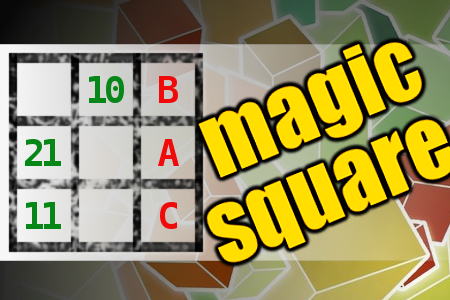MAGIC SQUARE: Calculate A*B-C
The aim is to place the some numbers from the list (10, 11, 12, 13, 14, 16, 21, 22, 25, 67, 85) into the empty squares and squares marked with A, B an C. Sum of each row and column should be equal. All the numbers of the magic square must be different. Find values for A, B, and C. Solution is A*B-C.Correct answers: 20
The first user who solved this task is Djordje Timotijevic.
#brainteasers #math #magicsquare

Wishful thinking
A wife went to the police station with her next-door neighbor to report that her husband was missing. The policeman asked for a description.
She said, "He's 35 years old, 6 foot 4, has dark eyes, dark wavy hair, an athletic build, weighs 185 pounds, is soft-spoken, and is good to the children."
The next-door neighbor protested, "Your husband is 5 foot 4, chubby, bald, has a big mouth, and is mean to your children."
The wife replied, "Yes, but who wants HIM back?"

